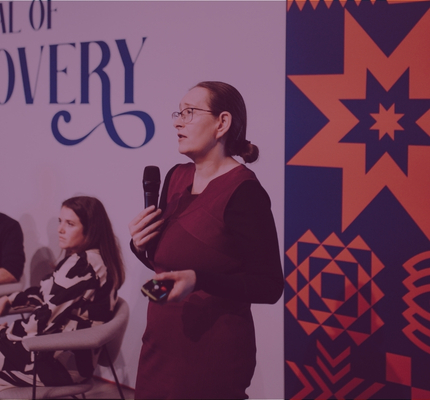
TV
Stories from the Front Line: Heal’s Vision on Customer Journey
Heal's is a renowned furniture retailer that has been around since 1810. Have a look at what Mark Hammond had to stay on how they stay on top of their game and relevant in the ever-changing world of product discovery.

In today’s fast-paced digital world, it’s crucial for businesses to stay on top of their game when it comes to product discovery. To gain insights into this process and learn from the experts, we held an interesting panel “Stories from the Front Line: Three Different Perspectives” which brought together three industry professionals, Janis Thomas from Look Fabulous Forever, Mark Hammond from Heal’s, and Yuvraj Singh from EPAM. They gathered together to share their experiences, offer unique perspectives on product discovery and learn from one another.
This blog will feature a story from Mark Hammond, Head of ecommerce at Heal’s who has been in and around retail for two decades. Although he has worked in different verticals, he says that retail is where his heart is. Without further ado, let’s dive into Heal’s approach with product discovery, customer feedback and how they try to stay relevant in this ever-changing industry from Mark’s perspective.
Heal’s is a renowned UK-based furniture retailer that has been around since 1810. As a company that prides itself on innovation, they have their own furniture and development while also showcasing premium brands from across the UK and beyond. Being a well-established brand, they do still face a lot of challenges and try to stay on top of their game by having a deep understanding of their customer’s behavior and mindset.
For businesses like Heal’s, the challenge is to understand the various requirements and integrate them into customer journeys seamlessly. To achieve this, there are four main areas to focus on.
The first is utilizing the knowledge of the staff, who are passionate about the products and the brand. The second is diving into all available data, which includes analyzing competitor strategies and monitoring and analyzing everything. The third is to constantly learn and develop by staying up-to-date with trends and seasonality. Finally, the biggest lesson we learned from Mark is how important the knowledge of the store staff is. This knowledge is invaluable in providing customers with an exceptional in-store experience, which translates into higher online sales. By focusing on these four areas, Heal’s has been able to provide a personalized and seamless customer experience, which is crucial in today’s competitive retail landscape.
One of the biggest strengths of Heal’s is their engaged and passionate staff who have a deep understanding of the products and brand. Mark emphasized that the buyers understand the details behind what they are building, the merchandising team understands seasonality and trends, and the store staff have a wealth of knowledge that cannot be replicated in a pure play online background. By investing in staff training and development, businesses can improve the customer experience and set themselves apart from competitors. This involves understanding different product classifications, customer perceptions, and buying behavior. It also means leveraging the expertise of staff, especially those in physical stores, who have valuable insights into customers’ shopping habits and challenges.
For example, through conversations with staff, Heal’s discovered that their biggest upsell opportunity for their mattresses was the spring count. Hammond noted that while retailers have access to a lot of data, the internal search function is a good place to start in understanding what customers are searching for and what they are not finding. He stated that a big help with that was using Klevu’s solution to analyze customers searches and identify what the customers are struggling to find. By reviewing high exit rates, Heal’s can better understand what customers are looking for and where improvements need to be made.
To ensure they are capturing everything upfront, the company conducts extensive keyword research and SEO analysis, in addition to analyzing customer feedback through surveys and reviews. Synonym research is also critical to ensuring customers can find what they are looking for. After gathering data, they funnel it back to understand customer intent to determine what works and what doesn’t work. By doing this, Heal’s can ensure that their website is not only optimized for SEO but also designed with the customer’s needs and preferences in mind.
Another great example he gave was the term “tension” versus “firmness” when describing mattress preferences. While the company had always used the term “tension,” customers were searching for “firmness,” which led to a mismatch between their expectations and the website’s terminology. By identifying patterns and lead messages, businesses can learn and adapt accordingly.
Rather than relying solely on data, Heal’s takes the extra step of reviewing their search functionality with real people to determine what works and what doesn’t. By combining data analysis with human feedback, they are better equipped to provide an intuitive and user-friendly search experience. Ultimately, this process helps to improve customer satisfaction and drive sales, making it a crucial element of any e-commerce business.
Hammond stresses the importance of data hygiene and basic data structure. Businesses must remain vigilant about monitoring and analyzing their data to stay up to date with their customers’ needs and preferences. They should also use this data across different teams, such as PPCs and CRM, to optimize the customer journey across the entire business.
Overall, Hammond’s insights emphasize the importance of using data to optimize SEO and improve the customer experience. By analyzing customer behavior and using this data to inform website design and SEO strategies, businesses can remain relevant in an ever-changing market.
Big thanks to Mark and Heal’s for being a part of our Discovered conference and sharing his insights!

